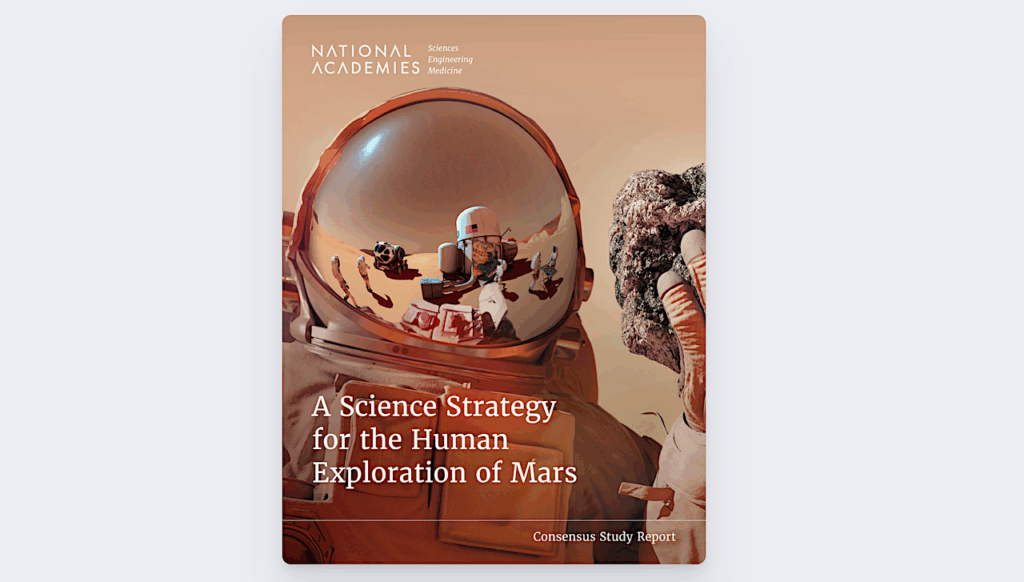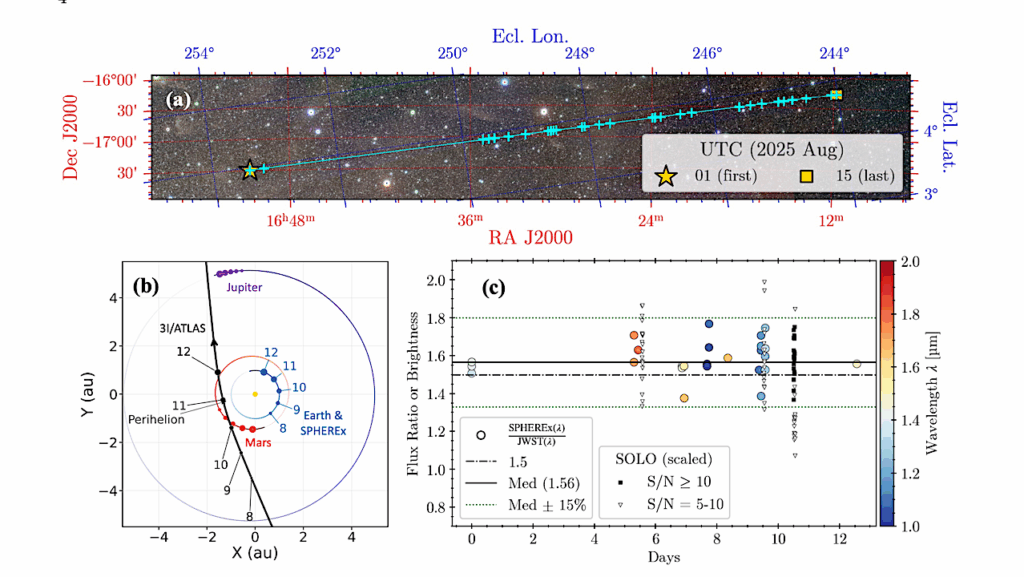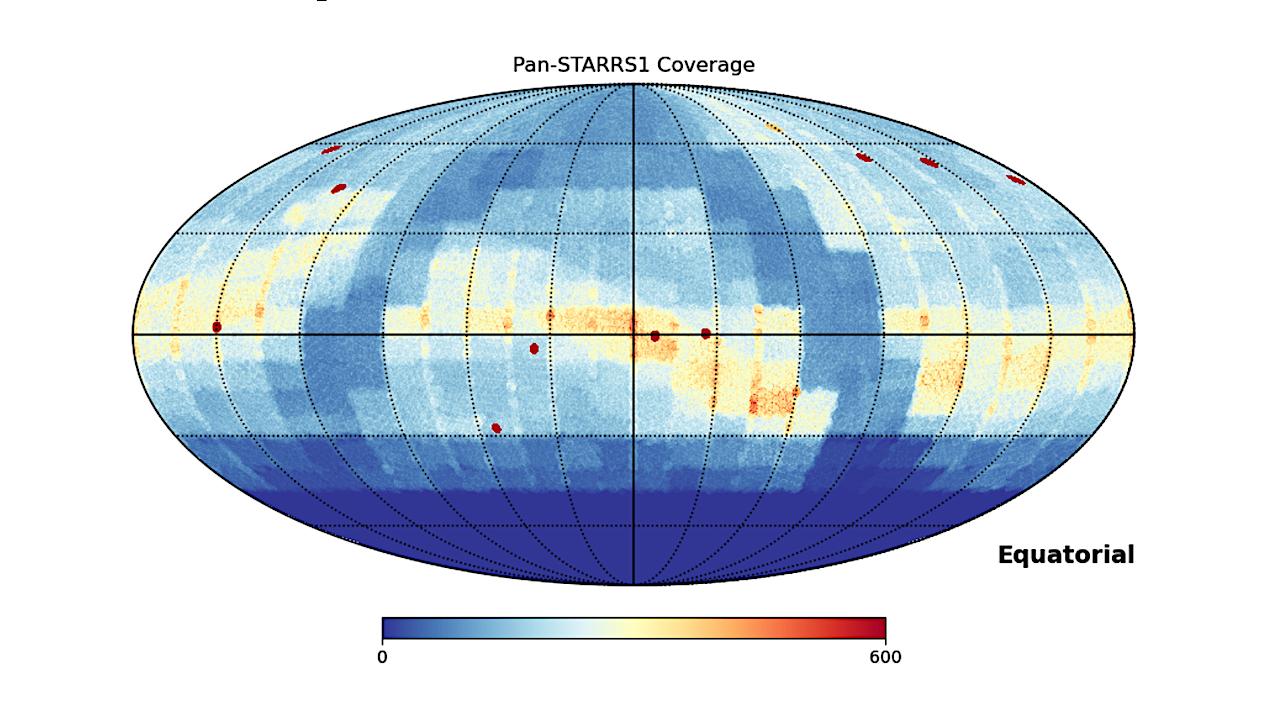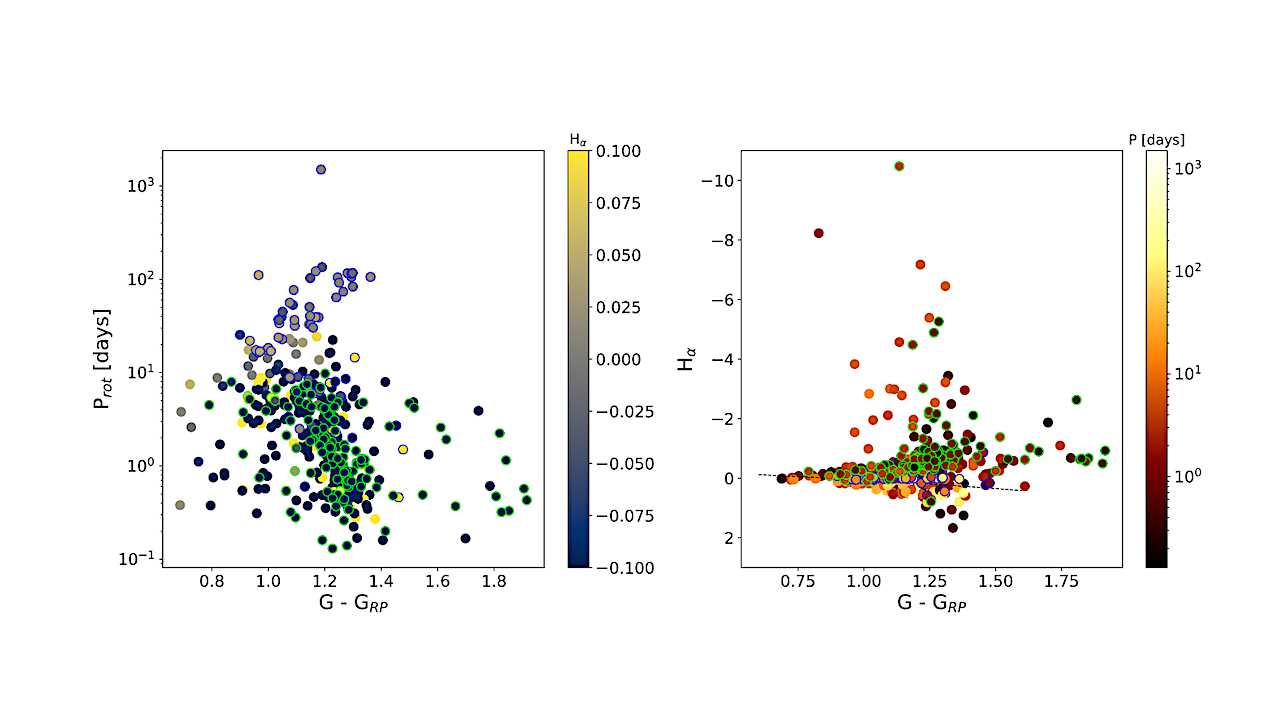Now Reading: Planets Similar In Size Are Often Dissimilar In Interior
-
01
Planets Similar In Size Are Often Dissimilar In Interior
Planets Similar In Size Are Often Dissimilar In Interior
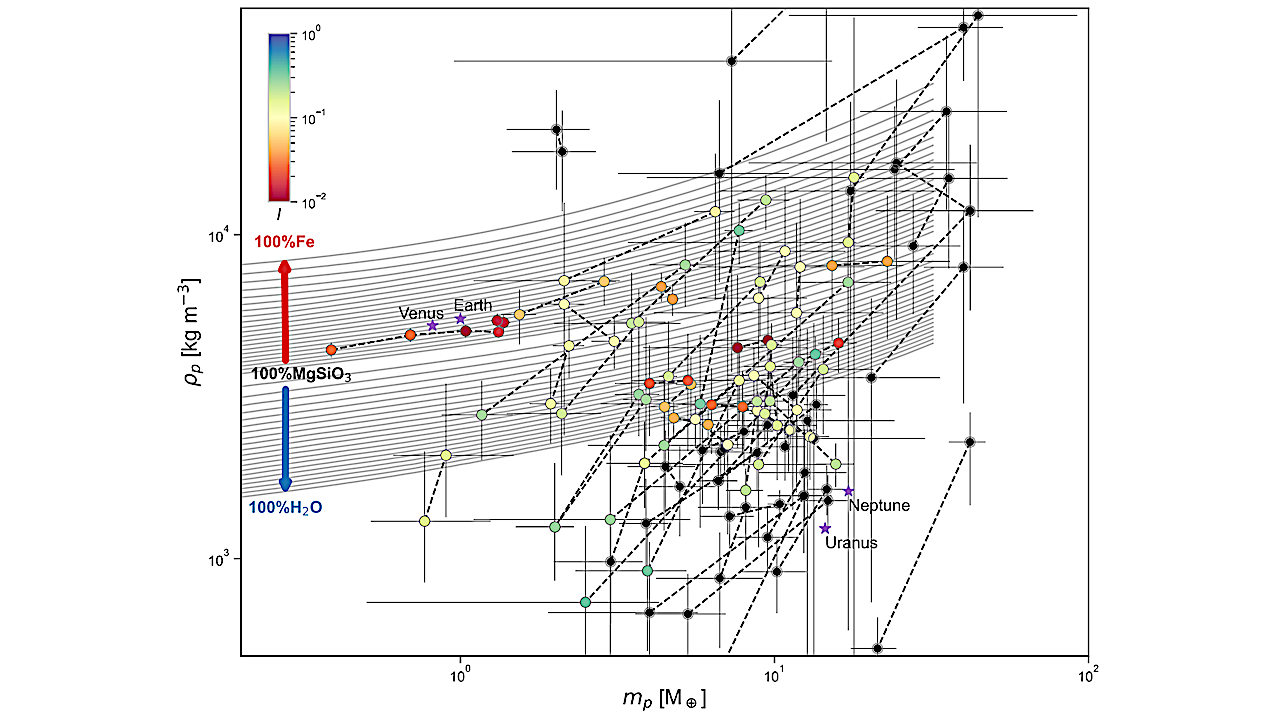

HCR sample on the mass–density diagram. The dots, connected by black dashed lines, are planet pairs that belong to this sample. The coloured dots represent those planets, for which we calculated interior distance I. The red colours indicate a pair of planets at a short interior distance, which means they are probably similar in the interior structure, and blue colours indicate planets that show larger separation in the interior from their neighbour. Light-grey curves represent the MRR interior curves calculated by Zeng et al. (2016). From the baseline of a silicate planet with 100% MgSiO3, the red points in the direction of increasing Fe content, and each curve represents a 10% increase in Fe content up to 100%Fe. Similarly, the blue arrow points in the direction of increasing water content at 10% increments per curve. Solar System planets are added for comparison and plotted as purple stars. — astro-ph.EP
Recent works have found evidence of significant intrasystem uniformity in planet properties such as radius, mass, and orbital spacing, collectively termed ‘peas in a pod’ trends.
In particular, correlations in radius and mass have been interpreted as implying uniformity in planet bulk density and composition within a system. However, the samples used to assess trends in mass tend to be small and biased.
In this paper, we re-evaluate correlations in planet properties in a large sample of systems with at least two planets for which mass and radius have been directly measured, and therefore bulk density can be calculated. Our sample was assembled using the most up-to-date exoplanet catalogue data, and we compute the relevant statistics while using a procedure to ‘weight’ the data points according to measurement precision.
We find a moderate correlation in radius and a weak correlation in the densities of adjacent planets. However, masses of neighbouring planets show no overall correlation in our main sample and a weak correlation among pairs of planets similar in size or pairs restricted to Mp<100 M_Earth, Rp<10 R_Earth.
Similarly, we show that the intrasystem dispersion in radius is typically less than that in mass and density. We identify ranges in stellar host properties that correlate with stronger uniformity in pairs of adjacent planets: low Teff for planet masses, and low metallicity and old age for planet densities.
Furthermore, we explore whether peas in a pod trends extend into planet compositions or interior structures. For small neighbouring planets with similar radii, we show that their masses and interior structures are often disparate, indicating that even within the same system, similarity in radii is not necessarily a good proxy for similarity in composition or the physical nature of the planets.
E. Mamonova, Y. Shan, P. Hatalova, S.C. Werner
Subjects: Earth and Planetary Astrophysics (astro-ph.EP)
Cite as: arXiv:2506.05089 [astro-ph.EP] (or arXiv:2506.05089v1 [astro-ph.EP] for this version)
https://doi.org/10.48550/arXiv.2506.05089
Focus to learn more
Journal reference: 2024A&A…685A.143M
Related DOI:
https://doi.org/10.1051/0004-6361/202347049
Focus to learn more
Submission history
From: Elena Mamonova
[v1] Thu, 5 Jun 2025 14:34:54 UTC (3,413 KB)
https://arxiv.org/abs/2506.05089
Astrobiology,
Stay Informed With the Latest & Most Important News
Previous Post
Next Post
-
 012024 in Review: Highlights from NASA in Silicon Valley
012024 in Review: Highlights from NASA in Silicon Valley -
 02Panasonic Leica Summilux DG 15mm f/1.7 ASPH review
02Panasonic Leica Summilux DG 15mm f/1.7 ASPH review -
 03How New NASA, India Earth Satellite NISAR Will See Earth
03How New NASA, India Earth Satellite NISAR Will See Earth -
 04From Polymerization-Enabled Folding and Assembly to Chemical Evolution: Key Processes for Emergence of Functional Polymers in the Origin of Life
04From Polymerization-Enabled Folding and Assembly to Chemical Evolution: Key Processes for Emergence of Functional Polymers in the Origin of Life -
 05And Thus Begins A New Year For Life On Earth
05And Thus Begins A New Year For Life On Earth -
 06Astronomy Activation Ambassadors: A New Era
06Astronomy Activation Ambassadors: A New Era -
07SpaceX launch surge helps set new global launch record in 2024












